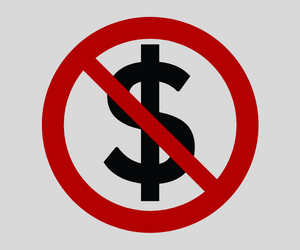In the current issue of Commentary my friend Rabbi Meir Soloveichik discusses J.R.R. Tolkien’s fascination with the Jews, who are of course the Dwarves in the Hobbit and The Lord of the Rings, as Tolkien himself stated in a 1971 BBC interview. Tolkien was no anti-Semite (not, at least, according to the canonical definition, namely someone who hates the Jews more than is absolutely necessary). His views in The Hobbit were typical of the philo-Semites of the 1930s: the Jews/Dwarves are “calculating folk with a great idea of the value of money; some are tricky and treacherous and pretty bad lots; some are not, but are decent enough people…if you don’t expect too much.”
In The Lord of the Rings, completed after the Holocaust, Tolkien turned more sympathetic, depicting a great Elf-Dwarf friendship, and presaging (as Rabbi Soloveichik points out) a Jewish-Christian alliance against the forces of evil. One might add that in The Silmarillion, Tolkien’s early (but posthumously published) compendium of Middle-Earth mythology, the Dwarves were created before the Elves, just as the Jews came before the Christians–but by mistake, in Tolkien’s account.
In the Dwarves’ quest for their ancient homeland in the Lonely Mountain, Rabbi Soloveichik observes, Tolkien evinces a certain sympathy for Zionism.
But all this begs the question of what put the Jews at the center of Tolkien’s attention in the first place. Part of the answer is to be found in Tolkien’s lifelong effort to undo the pernicious influence of Richard Wagner, whose “Ring of the Nibelungs” is the most influential art work of the past two hundreds years (and in my view also the most pernicious). Wagner plundered the ancient Norse and Germanic sagas in the service of a revived paganism. Tolkien by contrast set out to repurpose the old pagan stories to make them a sounder foundation for the Christianity that would succeed them.
In Wagner’s pageant of gods and heroes, the aristocracy (the gods) establish their rule by treaties (covenants). But in order to maintain their rule they must hire the Giants (capital and labor) to build their fortress Valhalla, and steal the cursed gold of the Nibelung dwarves (the Jews). Wagner made clear in his writings and correspondence that the nasty Nibelungen were the Jews, whom he really, really hated. In one of his last writings he claims that the point of the Eucharist is to purge the communicant of pollutants to Aryan blood, in particular to remove the stain of Jewish blood from Jesus himself. Wagner stole the plot of his breakthrough opera “The Flying Dutchman” from one Jew (Heinrich Heine) and its musical portrayal of the sea from another Jew (Felix Mendelssohn), and then published a pamphlet alleging that Jews could only imitate but not create new art.
Wagner’s legacy remains baleful. Fortunately, many more people know Tolkien than know Wagner, and we may pronounce Tolkien’s project a success. Unfortunately, Wagner’s hold on the cultural elite remains strong, and influences modern culture in ways of which the popular audience is unaware. A stake has not yet been driven through his heart. I swing a mallet to this end whenever opportunity permits.
In a 2003 essay (“The Ring and the Remnants of the West”) I compared Wagner’s and Tolkien’s respective treatment of the same Norse and Teutonic mythological themes:
| Nibelung Alberich forges a Ring of Power | Sauron forges a Ring of Power |
| Wotan needs the giants to build Valhalla | The Elves need Sauron to forge their Rings of Power |
| The Ring gives the bearer world domination | The Ring gives the bearer world domination |
| Wotan uses the Ring to pay the giants | Sauron betrays the Elves |
| The Ring is cursed and betrays its bearer | The Ring is evil and betrays its bearer |
| Fafner kills brother Fasolt to get the Ring | Smeagol kills friend Deagol for the Ring |
| Fafner hides in a cave for centuries | Smeagol-Gollum hides in a cave for centuries |
| Siegfried inherits the shards of his father’s sword | Aragorn inherits the shards his fathers’ sword |
| Brunnhilde gives up immortality for Siegfried | Arwen gives up immortality for Aragorn |
| Wotan plays “riddles” for the life of Mime | Gollum plays “riddles” for the life of Bilbo |
| A dragon guards the Nibelungs’ hoard | A dragon guards the dwarves’ hoard |
| The gods renounce the world and await the end | The Elves renounce the world and prepare to depart |
| The Ring is returned to its origin, the River Rhine | The Ring is returned to its origin, Mount Doom |
| Hagen falls into the river | Gollum falls into the volcano |
| The dwarves are the Jews (and are very wicked) | The dwarves are the Jews (clannish and greedy but not wicked) |
| A new era emerges in the world | A new era emerges in the world |
| Men are left to their own devices | Men are left to their own devices |
I concluded, “Tolkien enthusiasts emphasize his differences with Wagner, as if to ward off the disparagement that The Lord of the Rings is a derivative work. As Bradley Birzer, David Harvey, and other commentators observe, Tolkien detested Wagner’s neo-paganism. He was a devout Roman Catholic, and explicitly philo-Semitic where Wagner was anti-Semitic. But this defense of Tolkien obscures a great accomplishment. He did not emulate Wagner’s Ring, but he recast the materials into an entirely new form. ‘Recast’ is an appropriate expression. A memorable scene in Wagner shows Siegfried filing the shards of his father’s sword into dust, and casting a new sword out of the filings. That, more or less, is what Tolkien accomplished with the elements of Wagner’s story. Wagner will still haunt the stages of opera houses, but audiences will see him through Tolkien’s eyes.”












Join the conversation as a VIP Member